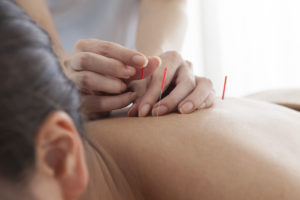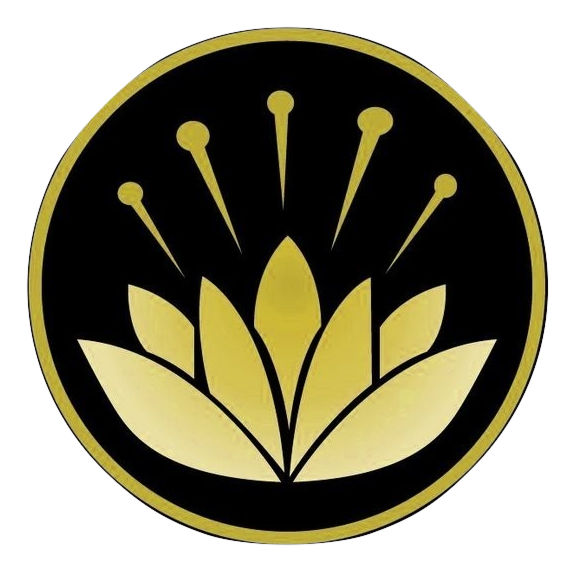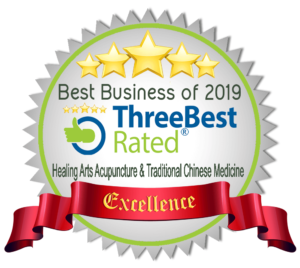 Do the needles hurt?
Do the needles hurt?
Several acupuncture needles would fit into the space of a standard hypodermic needle.
Due in large part to their small size and precisely machined points, needles are usually imperceptible.
For certain applications, there are also needles with microscopic bio-inert lubricant coatings which can be utilized to reduce sensations even further.
Every now and then, however, a brief pinch or twinge may be perceived during an insertion by some patients.
It should be noted that acupuncture treatment is an interactive process during which patients and practitioners work together to determine proper treatment protocols. If the placement of a needle were to ever cause distress during a session, it would, of course, be immediately removed or adjusted.
Sensation from needles is normally no longer noticeable after they have been placed.
In the case of cosmetic acupuncture procedures, the diameter of the needles used is reduced even further leading to virtually painless insertion. On the rare occasion when an unpleasant sensation is perceived, it is comparable in quality to a quick tug on the shaft of a hair.
Do you take insurance?
Acupuncture is covered by many extended health-care benefit plans. Some reimburse the fees to a maximum limit while others cover a percentage of each treatment. It is recommended that you contact your insurance provider for your plan’s specific details.
We do not bill your insurance company directly, but will supply you with a receipt for our services with which you may then submit a claim to obtain whatever reimbursement for which you might qualify.
Can your treatments help with my condition?
There are many conditions for which TCM treatment is indicated and can be beneficial. These are often chronic in nature. At the same time, there are many conditions for which the services of another health-care professional are called for.
To determine if TCM can be of assistance, a proper assessment of your condition and the current state of your health would be necessary.
You may rest assured that we will only treat those conditions for which we have a good chance of success, as well as the training and qualifications, and refer you to other health-care professionals when required.
How many treatments will it take?
The course of treatment is unique to the individual. Such factors as how long you have been dealing with your condition, its intensity, frequency, your age, and the state of your general health, among other important factors, all have a role to play in answering this question.
How many treatments before I see improvement?
Treatment can be characterized as having a course with a beginning, middle and end.
Initially, some type of improvement is seen. By the mid-phase of treatment, improvement becomes more marked and by the end, improvement reaches such a state that further treatment, if desired, is focused on the maintenance of positive results.
Generally speaking, some sort of improvement is often apparent within the first to fourth session unless there is a particularly long-term or stubborn complaint involved in which case it may take approximately 5-7 treatments before the first signs of improvement become noticeable.
Improvement may manifest in a number of ways such as, in the case of a painful condition, less intense pain, a lower frequency or shorter duration of painful episodes, or a less frequent need for medication. Progress in one area often leads to progress in others.
In the event that treatment shows no signs of progress, another approach may be attempted or you may be referred to another health-care professional.
How much time will I have to devote to treatments?
In the beginning of an intervention, the frequency of treatments is higher, generally 3-4 treatments scheduled over 7-9 days. By the middle, it is not unusual to have a treatment given once per week for the next 4-5 weeks. Once the response to treatment has been found to have leveled out, one treatment per month may be given to maintain the positive results.
It is important to note that good results rely on your continued effort between treatments.
By following your practitioner’s advice as to how to maintain and build upon the progress of your sessions, you will allow yourself the opportunity to realize the maximum benefit of your course of care.
Is it advisable to receive acupuncture treatments when I’m also taking medicine, or scheduled for surgery, or receiving chiropractic care, etc.?
Acupuncture is very rarely incompatible with other treatments as it essentially helps the body to naturally heal itself without the addition of any external agents that might be contraindicated. If desired, please feel free to ask us about your specific situation, and/or have your doctor contact us.
As the herbs that you prescribe are imported from China, how can I be sure of their safety and quality?
Both the historical and modern literature/knowledge that exists concerning the medicinal effects of Chinese herbs pertains only to those herbs that are indigenous to China. For this reason, it is necessary to utilize herbs of Chinese origin. Most of these herb species are also only found in China.
We exclusively source the herbs we use from internationally recognized suppliers who meet or exceed rigorous GMP (Good Manufacturing Processing) standards and include laboratory testing for contaminants such as sulfur, pesticides, and heavy metals as part of their manufacturing process. This ensures that the herbs are grown, harvested, processed, and packaged according to the conditions necessary to ensure their safety and potency. Some of our importers also subject the products to secondary independent laboratory testing in the United States.
Whenever possible, we choose to use suppliers who support the utilization of agricultural practices conducive to environmental, economic and social sustainability (GAP, Good Agricultural Practice).
What type of training is required to become a practitioner of Chinese medicine and acupuncturist?
Currently in Ontario, training usually begins following the successful completion of a minimum two years of full-time study at the post-secondary level. Following acceptance into a school of traditional Chinese medicine, a program of study consisting of approximately 3200 hours follows which normally requires a period of four standard full-time academic years to complete.
Within the practitioner’s diploma program, as presently offered in Ontario academies of TCM, courses in TCM theory, acupuncture, herbology, and the biological sciences, among others, are undertaken along with hundreds of hours of clinical internship.
Graduates must then successfully complete two nationally administered full-day examinations regarding TCM theory and clinical practice, as well as two provincially administered tests related to infection control and jurisprudence before licensure is granted by the professional college that governs TCM practitioners in Ontario, the CTCMPAO.
Do you treat children?
To receive acupuncture treatment, children would have to be able to sit quietly with needles in place for approximately 15 minutes.
Where acupuncture is not an option, there are several other treatment methods available that can effectively be used to address a variety of disorders and which may be more tolerable to children.
Please note that patients under 16 years of age require the consent of a parent or guardian prior to receiving treatment.







